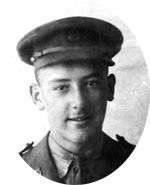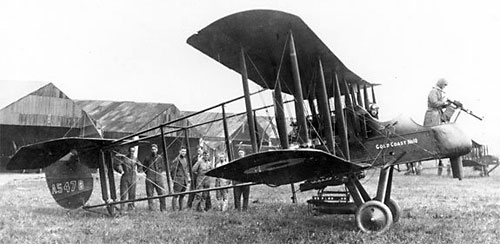

| Birth | 1895, Lydney, Gloucestershire |  |
| Parents | Frank and Constance Summers, of Froyle Place, Alton, Hants | |
| Residence | Froyle Place, Upper Froyle, Hants | |
| Occupation | ||
| Enlisted | ||
| Regiment | 22nd Sqdn., Royal Flying Corps | |
| Regimental No: | ||
| Rank | Captain | |
| Service Record | He joined the 18th Hussars where he attained the rank of Lieutenant. On 9th September 1915, at The Military School, Farnborough, Hampshire, he took his certificate on a Maurice Farman bi-plane in order to join 22nd Sqadron RFC | |
| Death | 1st August 1916, killed in action, aged 20 | |
| Theatre of War | France & Flanders | |
| Commemoration | The Arras Memorial at Faubourg D´Amiens Cemetery, Arras (Flying Services Memorial) | |
| Medals | Military Cross awarded 27th July 1916 for “conspicuous gallantry and skill”. | |
| William Assheton Summers was born in Lydney, Gloucestershire, on 22nd August 1895. He was the son of Frank and Constance (née Taylor) Summers, who were living at Froyle Place, Upper Froyle. Educated at Eton and Sandhurst, William was one of the first young men in Froyle to enlist. He received a commission in the 18th Hussars in March, 1914, and went out with his regiment in the early days of the war. He transferred to the R.F.C. in May 1915 and on 9th September 1915, at The Military School, Farnborough, he took his certificate, on a Maurice Farman Biplane, in order to join the 22nd Squadron, Royal Flying Corps (which, on 1st April 1918, became the Royal Air Force). On 27th July 1916 he received the Military Cross for conspicuous gallantry and skill. Lieutenant (Temporary Captain) Summers, as pilot, and (Temporary) Lieutenant Tudor-Hart, as observer, attacked a flight of nine enemy planes, completely breaking up their formation. They were quite unsupported, but only broke off the engagement when they ran out of ammunition many miles over the enemy’s lines. Their plane was under constant heavy fire from as many as four hostile aircraft at once, and was badly damaged. Froyle Parish Magazine reported the honour with pride in the August Magazine: |
||
It gives us much pleasure to record the fact that Captain W.A.S.Summers has been recommended for the Military Cross. A man in the Flying Corps describes the exploit for which the honour was accorded, in the following words. He says ‘I have just seen in orders that Summers has got the Military Cross. He well deserves it. Apparently the other day he attacked nine Hun machines single handed, and drove one down. All this the other side of the line. Then on his way he fired into the Reserves and stampeded their horses, and crossed the trenches at 1500ft, very low, so he did well.’ We heartily congratulate Captain Summers, and also Mr and Mrs Summers. |
||
| But only a month later the news was tragic: | ||
|
||
| William died on 1st August 1916, shot down between Albert and Bapaume, while flying his FE2b. In a letter to Frank and Constance Summers, his Brigadier wrote: |
||
|
||
| As well as the Military Cross, William was awarded the British War Medal and the Victory Medal. Captain William Assheton Summers is commemorated on the Flying Services Memorial at the Arras Memorial at Faubourg D’Amiens Cemetery, France. |
||
 An FE2b, similar to that flown by William Summers Note the gunner standing up in the front cockpit |
||
| William Summers wrote this ‘Combats in the Air Report’ on 25th June 1916. We believe he received his MC for this action. | ||
Squadron 22 Date: 25.6.16 |
||